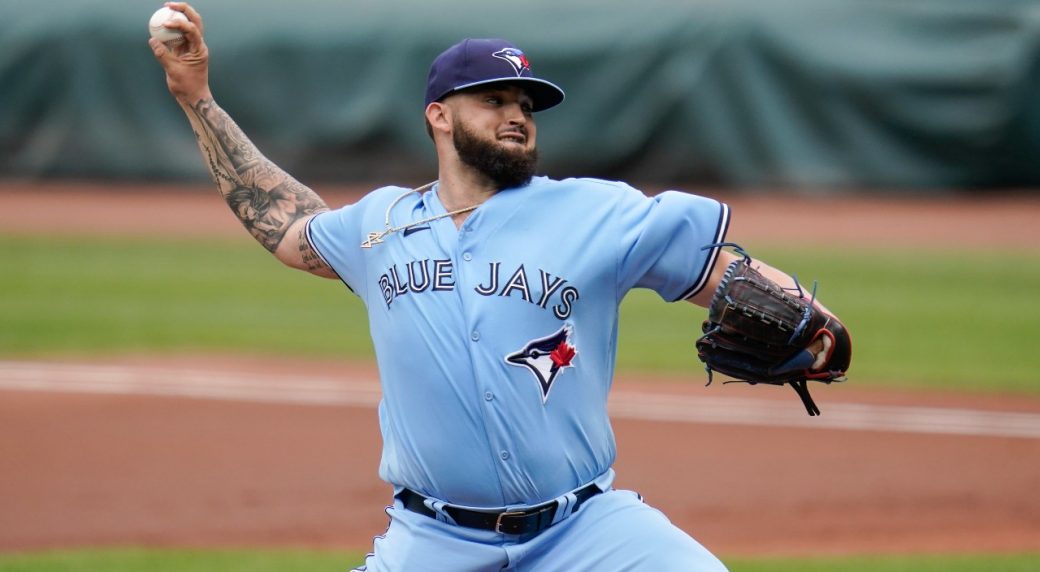The reason the Toronto Blue Jays had to trade so much prospect capital for José Berríos is that the chances of developing a Berríos-quality player are so slim.
In the franchise’s 45 seasons, only nine pitchers have exceeded Berríos’s career WAR of 13.5 in a Blue Jays jersey — and the Puerto Rican right-hander is just 27. The price of even one-and-a-half seasons of Berríos is steep because the next Berríos is rarely waiting around the corner.
For the Blue Jays, though, he might be.
At first glance, Berríos and Alek Manoah don’t have much in common. The former Minnesota Twins veteran and two-time all-star is listed at 6-0, 205 pounds, and his consistency and business-like nature have resulted in a nickname literally translates to "The Machine."
Manoah, on the other hand, stands 6-6, 260, goes about his work with a smile and has just 10 MLB starts to his name.
For all those differences, the arsenals that Berríos and Manoah bring to the tables are awfully similar. The parallels begin with velocity as Berríos averages 94.2 m.p.h. on his four-seamer, while the rookie comes in at 93.8 m.p.h. The similarity is actually more intense on the two’s secondary stuff as each features a sweeping breaking ball with excellent horizontal movement:

And a relatively non-descript changeup:

Despite some notable differences in how their fastballs work — Manoah has a higher spin rate four-seamer that allows him to attack above the zone, while Berríos’s heater has more run, making it a pitch that lives in the zone and generates soft contact — the veteran’s body of work is proof of concept for how Manoah can thrive with good-not-elite velocity, an average changeup and a dynamic sweeping breaking ball.
So, what could the up-and-comer learn from a veteran who’s put together an enviable career with a similar tool set? Here are a couple of lessons from Berríos’s career that could be helpful to Manoah:
• If you’ve got two fastballs that move in different directions, use them to own each side of the plate.
Both Manoah and Berríos have four-seamers and sinkers, but the former could take a page from the latter’s ability to use them for different purposes. Here’s a heat map on Berríos’s four-seamer compared to his sinker:
Four-seamer
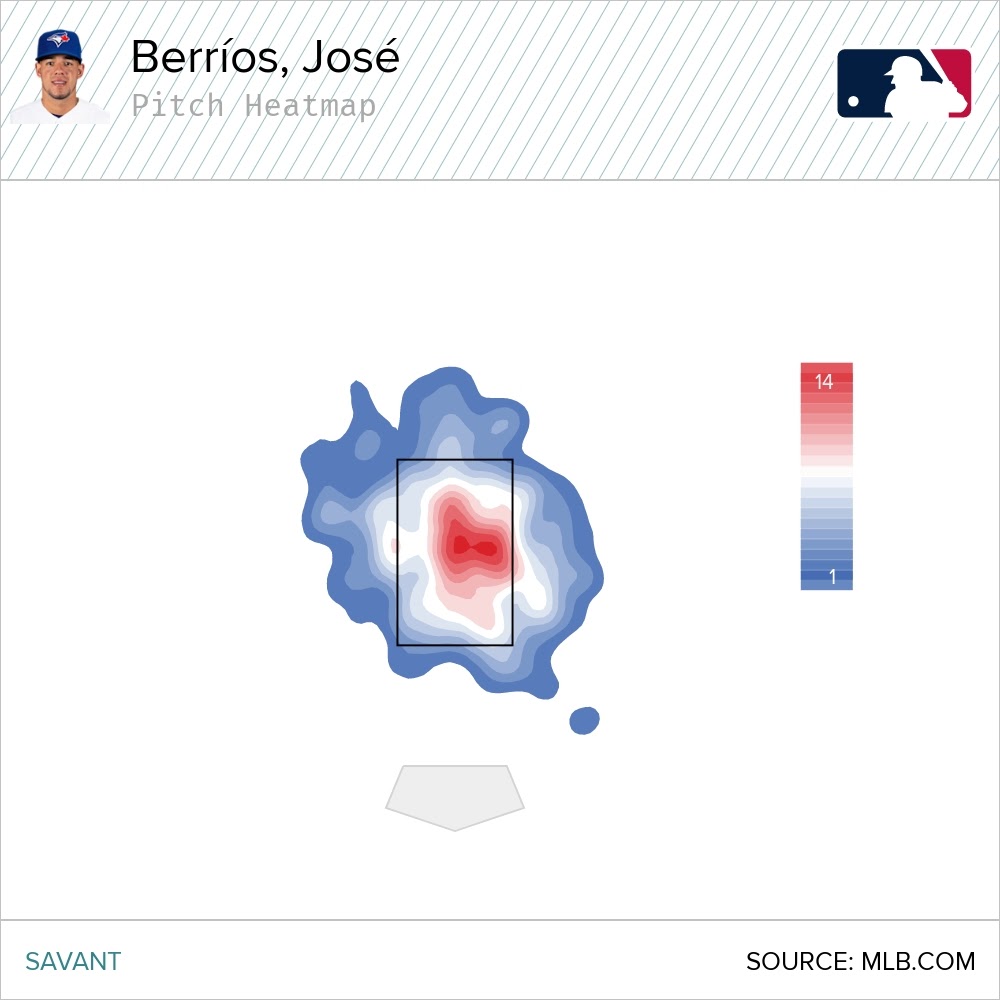
Sinker
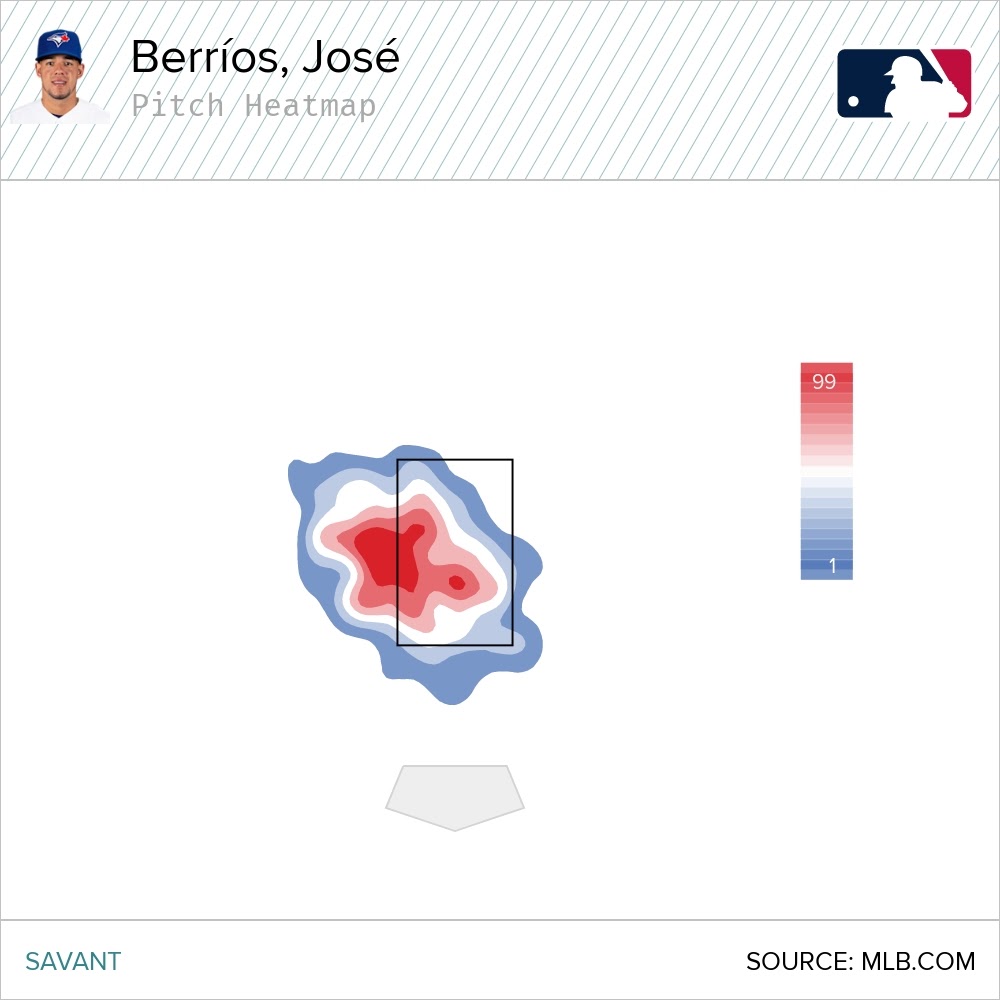
Against left-handed hitters, for instance, Berríos will use the right-to-left run on his four-seamer to bury pitches on the inside corner:
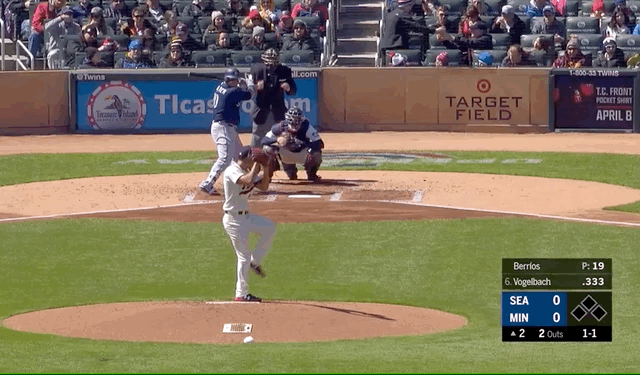
And he’ll take advantage of the opposite movement on his sinker to take shots at the outside corner.
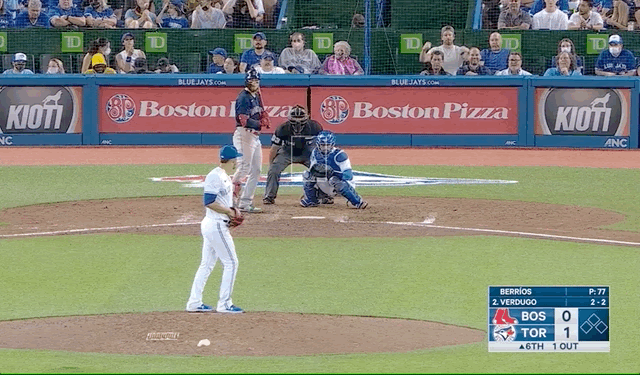
Manoah doesn't have the same diversity of approach with his two fastballs. The location heatmap of both looks approximately the same.
Four-seamer
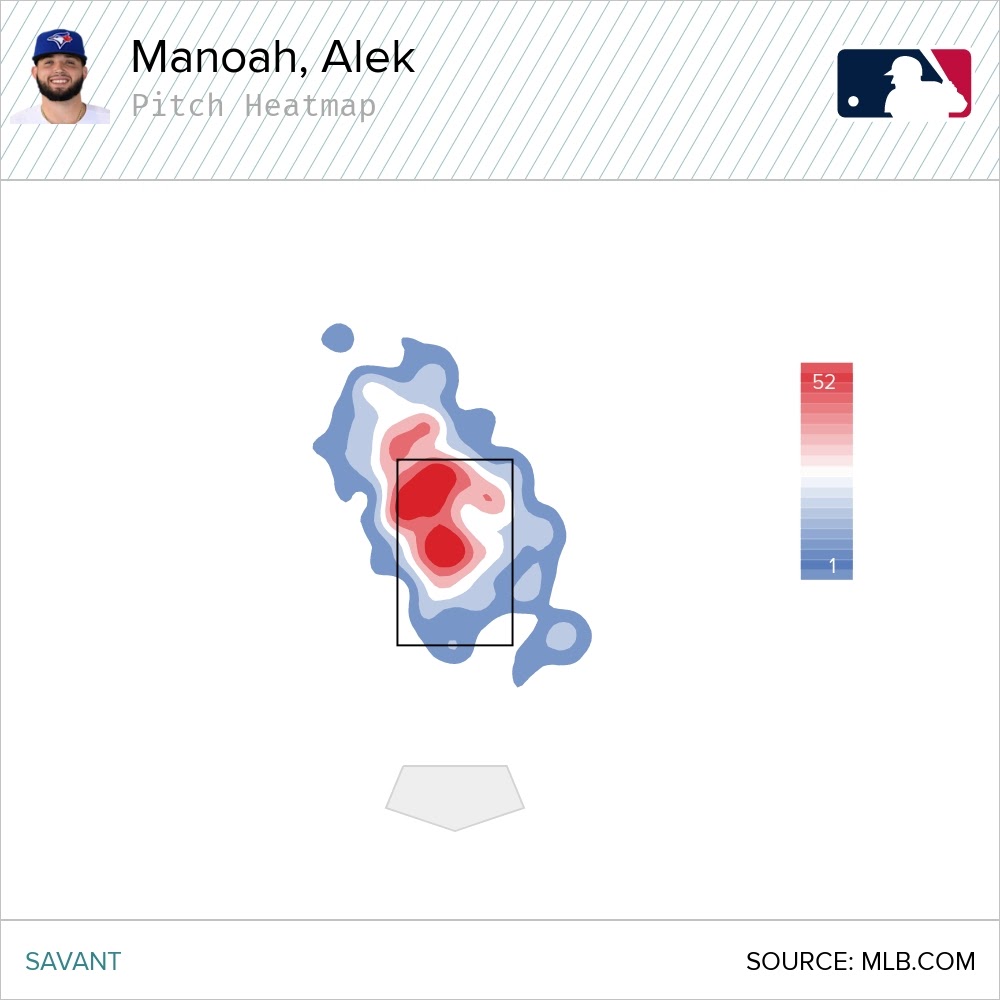
Sinker
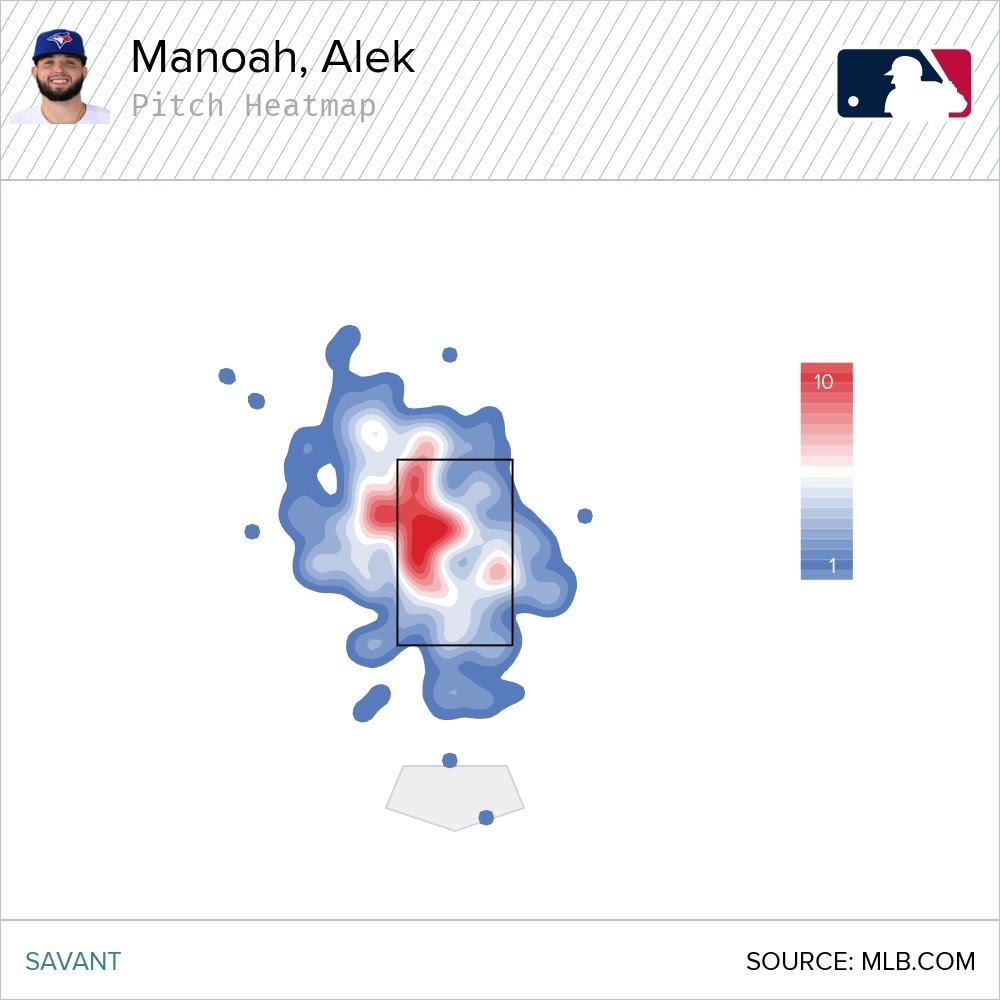
In Manoah’s case, the use of the sinker inside to righties — and outside to lefties — is intuitive. By using the offering this way, he makes similar pitches to Berríos on that side of the plate.

What’s less intuitive is that Manoah seems to focus on the same corner with a four-seamer. Staying away from lefties and into righties isn’t a bad thing by definition, but by avoiding the opposite corner with his heater, Manoah misses some opportunities to work off his slider there.
Alek Manoah, 96mph Fastball and 84mph Slider, Overlay with Tails. pic.twitter.com/Fwu4kXn15M
— Rob Friedman (@PitchingNinja) May 27, 2021
As it stands, Manoah’s slider is the only pitch he consistently throws to that side of the dish, which could make it easier to lay off at times.
• A little heat on the breaking ball never hurt anybody.
One of the things that makes Berríos’s curveball so tough to hit is that it’s a hard, biting pitch in the 92nd percentile in velocity among hooks. Contrarily, Manoah’s slider is a loopy offering that sits at 81 m.p.h, which is in the 13th percentile for sliders league-wide.
Velocity is rarely the be-all and end-all for breaking-ball effectiveness, but early in the rookie’s career his slider has been far better when it’s a little firmer.

The sample size here is small — Manoah has thrown just 51 sliders 83 m.p.h. or harder — but the swing-and-miss numbers are compelling, and the pitch simply looks better with a little juice behind it:
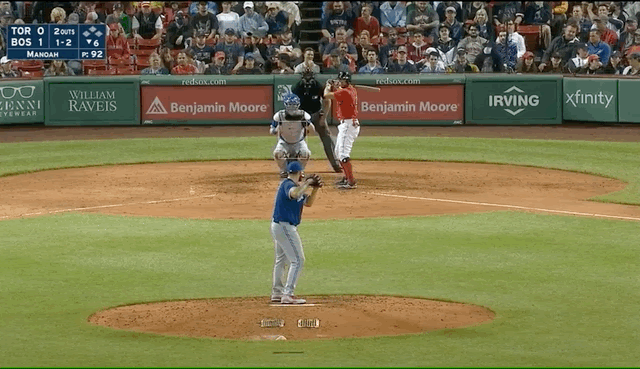
While increasing the velocity on a pitch without sacrificing too much movement or command is far easier said than done, it’s a feat that Berríos has managed in recent years:

If Manoah can follow in his teammate’s footsteps, his most dangerous weapon could get even deadlier.
• With a non-elite changeup, location is everything
Although Berríos's and Manoah’s changeups move in similar ways and work off fastballs with similar velocity, the effectiveness gap between them is significant. Berríos has allowed a batting average and slugging against on the pitch of .136 and .271, while those numbers are .368 and .789 for Manoah.
There’s plenty of small-sample-size nonsense in there for the rookie, but the veteran has made a pitch that doesn’t look special on paper generate special results. Berríos has done that thanks to his excellent command with the offering. Here’s where he’s placed it this year:

Berríos almost never lets the pitch leak over the plate and rarely leaves it high enough for it to be dangerous or non-competitive. As a result, he consistently gets lefties to reach for the pitch, resulting in whiffs:
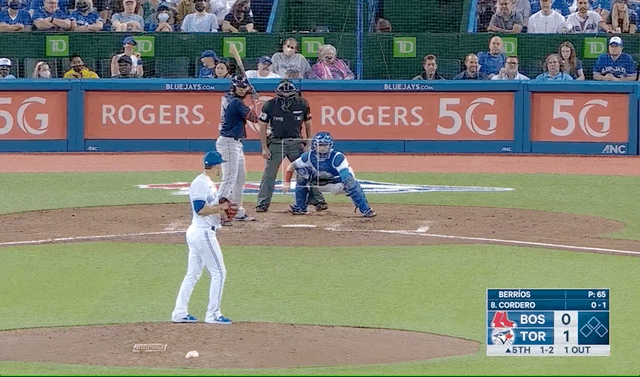
And soft ground balls:
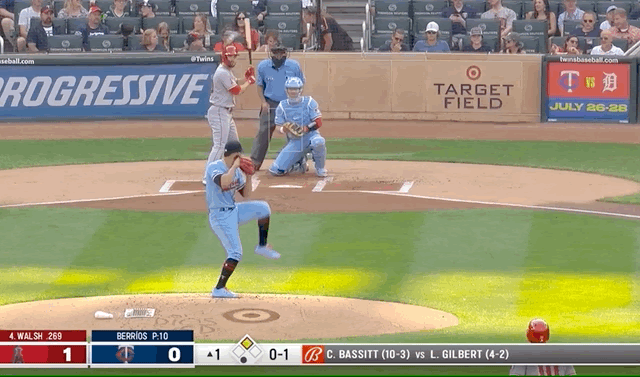
Unsurprisingly, Manoah isn’t as refined with his changeup yet, and the location is a bit scattershot — particularly off the plate horizontally and in the dirt.

Manoah’s change has always been behind his slider, but even though it’s a tertiary offering, its development will have a significant effect on his trajectory. Early in his career there’s evidence to suggest he performs better when he uses it more, and it will undoubtedly help him against tough lefties.
While there’s no guarantee the 23-year-old will find a superior feel for the changeup — many pitchers simply never do — Berríos once again provides an instructive example. In his rookie season the right-hander allowed hitters to bat .333 and slug .767 against the pitch.
Like Manoah, Berríos let the pitch leak too far up and away to lefties, and threw non-competitive pitches too far below the zone.

The fact Berríos found his change is no guarantee Manoah will. The former Twins starter has honed his craft over the years in a variety of ways and become one of the very best in the game. That’s a tough path for any young pitcher to follow.
While it would be a surprise to see Manoah reach those heights, he’s got the arsenal to make it happen.
